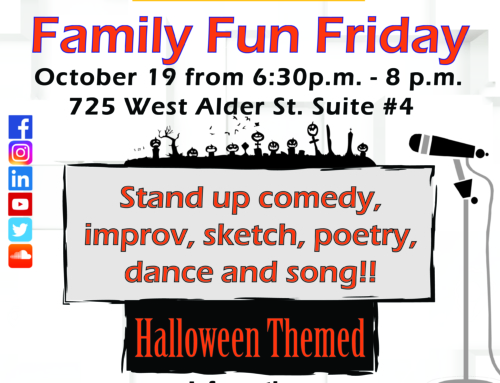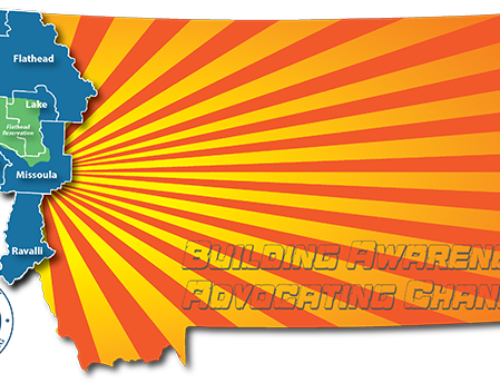The $600,000 roundabout at the intersection of Higgins, Hill and Beckwith was built with safety in mind. Cars could no longer be struck broadside in an accident. Vehicles would be moving more slowly. And drivers would be given the ability to look out for pedestrians and bicyclists. A 2005 Journal of Visual Impairment and Blindness article called, “Modern Roundabouts: Access by Pedestrians Who Are Blind,” asserts that “pedestrian-vehicle crashes at roundabouts occur relatively infrequently.” Yet, while there haven’t been any fatal accidents since it opened Sept. 3, not everyone feels that it’s safe.
Viola Spain is blind, and travels with her guide dog Madrid. She said that the design of the new intersection makes it too risky for her and Madrid to even practice crossing.
“It’s too dangerous,” Spain said. “I don’t even want to try it.”
Spain said that the intersection presents several hazards to blind people that aren’t immediately apparent to other pedestrians or drivers. If she listened to cars circle the roundabout, Spain would have no way of telling if they are about to turn toward her in a crosswalk or continue circling. In a traditional intersection, cars tend to travel straight at or straight away from her position. This challenge is compounded by the relative quietness of modern cars.
The inexperience Montana drivers have with successfully navigating roundabouts is another issue, Spain said.
“We, in Montana, do not know how to do roundabouts,” Spain said.
Not everyone in Missoula with a visual impairment is opposed to the roundabout though.
Dan Burke is blind and travels with a white cane. He said that although the roundabout will require some more practice to negotiate the crossing, “it’s fine.”
Burke said that although he doesn’t travel the route near the roundabout often because he rarely is in that part of town, he feels that the potential reduction in vehicle speed makes the intersection better. He admits that his first practice run with the roundabout didn’t go all that smoothly though.
“I ended up on the median,” Burke said. “I think I was tricked by an old curb cut.”
Burke said that several motorists yelled at him when he accidentally used an old curb cut, likely one of the cuts just north or just south of the intersection that are not marked with metal plates. The false crossing can lead pedestrians onto a median, also called a splitter island, before the roundabout. Still, Burke isn’t against the intersection’s new design.
“It’s about learning the new environments,” Burke said. “I’m pretty comfortable with it. I think it’s safer.”
Spain isn’t convinced though. A conversation with Don Frisk, the senior field manager of Guide Dogs for the Blind in Arizona, led her to decide to avoid the intersection.
Frisk, who drives to work, said he isn’t against all roundabouts.
“As a driver, I love roundabouts,” Frisk said. “They keep traffic moving.”
Frisk said that many roundabouts are great, especially those in quiet, residential neighborhoods, where blind pedestrians can listen for cars to pass before crossing. Frisk said the roundabouts in louder, more urban areas are the ones that present a hurdle for many of his consumers.
“The constant flow of traffic makes it impossible for a blind traveler to cross,” Frisk said.
Frisk said that roundabouts take away one of the most important tools that blind pedestrians use when traveling along busy streets: “parallel flow.” This flow gives people crossing the street the ability to judge when it is safe to cross based on the sound of the cars next to them. Blind people with guide dogs initiate the crossing by giving a command, often the word “forward,” to the dog. If there is an immediate threat, like a car coming straight down the street toward the path of travel, the dog will refuse to go. However, when cars approach from an angle toward crossings on roundabouts, such as the one on Higgins, the dog is unable to perceive a threat with the same degree of skill as if a car was traveling perpendicular to the path of travel.
Ultimately, though, Frisk said that the decision to negotiate a roundabout it up to individuals based on their skills and hearing acuity, the conditions of the roundabout and how safe they feel using the crossings.
“Some blind people use them with ease,” Frisk said, “while others take extraordinary steps to avoid them.”
Frisk said that the increasing popularity of roundabouts and quieter cars will make these crossings an ongoing challenge. He said people who use guide dogs will have to come up with solutions, one way or the other.
“We have to be clever and come up with the best ways to negotiate them,” Frisk said.
In my own hour-long observation of the Higgins roundabout, I noticed several potential challenges.
Old curb cuts, without metal marker plates, could lead blind pedestrians into a false crossing that leads onto a splitter island. On the south end, these cuts are located near a church on the east side of the street, and near the Bitterroot Building on the west side. To the north of the intersection, there are similar cuts. The north ‘false crossing’ may be the more dangerous, as parked cars would block pedestrians from drivers’ vision until pedestrians stepped into the street. A more worrying observation, though, was seeing Missoula drivers and bicyclists negotiate the roundabout.
Most drivers handled the roundabout well, traveling at safe speeds and obviously watching the other motorists and pedestrians. They pulled up near the roundabout at a moderate speed, and if there wasn’t an incoming car, they entered the roundabout. These drivers stopped at crosswalks when exiting the roundabout when pedestrians were crossing.
But, a fair number of motorists drove poorly. Many drivers were using cell phones as they negotiated the intersection. Those drivers also often went through the intersection too rapidly, often without looking in the direction of the crosswalk when they exited the roundabout. Several motorists ignored the yield sign and came to a full stop well away from the actual roundabout, often halting on or before the crossing, even when there were no other cars in the roundabout. One driver stopped at every entrance to allow other cars to merge into the roundabout, despite having the right-of-way. Several drivers exiting the roundabout did not stop for pedestrians starting onto the crosswalk. And one driver even executed a U-turn from a cross street onto the roundabout exit and entrance on Hill Street.
Like the motorists, most bicyclists negotiated the intersection well. However, one stayed on his bike, pedaling at full speed, as he used a pedestrian crossing. Another went from south Higgins to north Higgins at full speed without looking left into the roundabout, while he used a cell phone.
My observations reinforced Spain’s decision to continue avoiding the roundabout. And although the “Modern Roundabouts” article asserts that there are few pedestrian-vehicle crashes at roundabouts, it points out that fewer accidents may occur simply because many pedestrians, such as Spain, avoid intersections that have been converted to roundabouts.
Spain said that the large numbers of people using the roundabout correctly aren’t her primary concern, because she’s not worried about what good drivers are doing.
“All I need is one bad driver
More information about the Higgins-Hill-Beckwith Roundabout can be found at:
http://www.ci.missoula.mt.us/index.aspx?NID=911 and http://www.ci.missoula.mt.us/index.aspx?nid=587 .
The publication “Modern Roundabouts: Access by Pedestrians Who Are Blind” can be purchased online at: http://www.afb.org/store/product.asp?sku=jvib991005&mscssid=63 .
-Justyn Field




